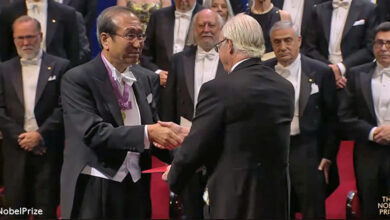NUS physicists utilise hair fluorescence to repurpose human hair waste
Activating the fluorescent properties of our hair using heat could convert human hair waste into a functional material for steganography and pollution detection

Physicists from the National University of Singapore (NUS) have developed an innovative method of converting human hair waste into a functional material that can be used to encrypt sensitive information or detect environmental pollutants.
On average, a single person can shed anywhere from 50 to 100 strands of hair per day. This contributes to a sizeable amount of waste which may take years to decompose into its natural form, or end up in incinerators, waste streams and dumps which produces toxic fumes including ammonia and sulfur dioxide during the decomposition process. Landfills of hair waste can leach toxic chemicals into bodies of water, harming marine wildlife and potentially lead to algal blooms. Furthermore, human hair can be breeding grounds for pathogens, putting nearby communities at risk of disease outbreaks.
“As the human population increases, there will be increasing pressure to manage human hair waste,” said Professor Sow Chorng-Haur from the Department of Physics under the NUS Faculty of Science. “Instead of sending hair waste to the incinerator or landfill, it is worthwhile to repurpose hair waste for other potential applications.”
In line with NUS’ commitment to integrated sustainability solutions, Prof Sow and his research team comprising Dr Sharon Lim from NUS, Dr Zhang Zheng from the Agency of Science, Technology and Research, and Malcolm Sow from NUS High School of Math and Science, devised a simple, heat-based and chemical-free method to transform human hair waste into a functional material for potential steganographic and pollutant detection applications. The team reported their findings in the journal Advanced Photonics Research which was published with a cover feature in late 2022.
Repurposing hair waste using heat
Under UV light, human hair has been shown to exude a mild blue fluorescence. While the chemical composition of the hair is likely to play a role, the exact causes or mechanisms underpinning this glow have yet to be determined. Leveraging the fluorescent nature of human hair, the researchers sought to transform hair waste into functional material.
In their first experiment, the researchers used a focused laser beam to engrave tiny patterns on the surface of a single strand of black human hair. Under a fluorescence microscope and UV light, the researchers found that these patterns glowed intensely. Compared with the rest of the strand, the laser-engraved patterns glowed around 350 percent to 400 percent brighter.
To read more : NUS News




